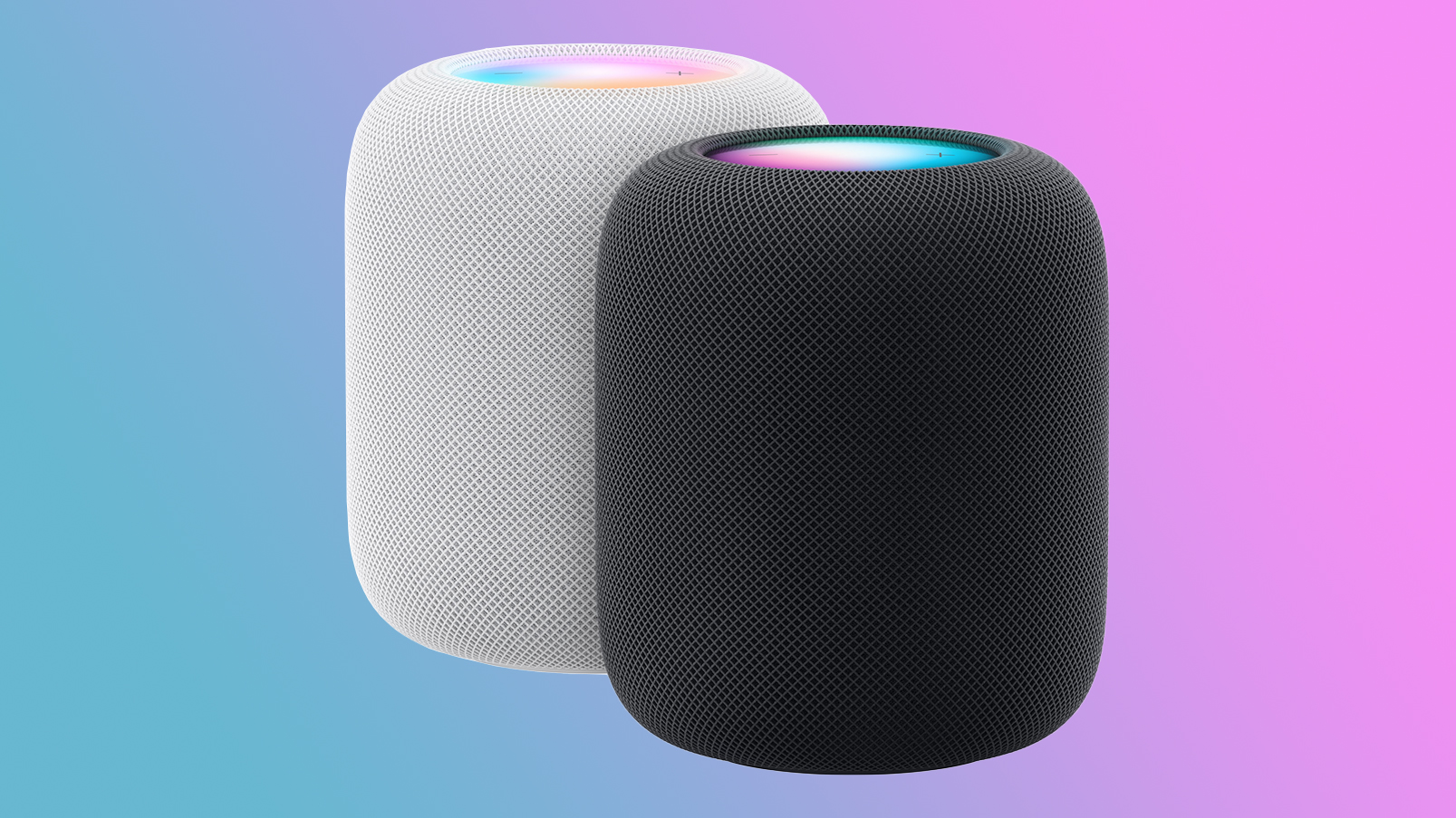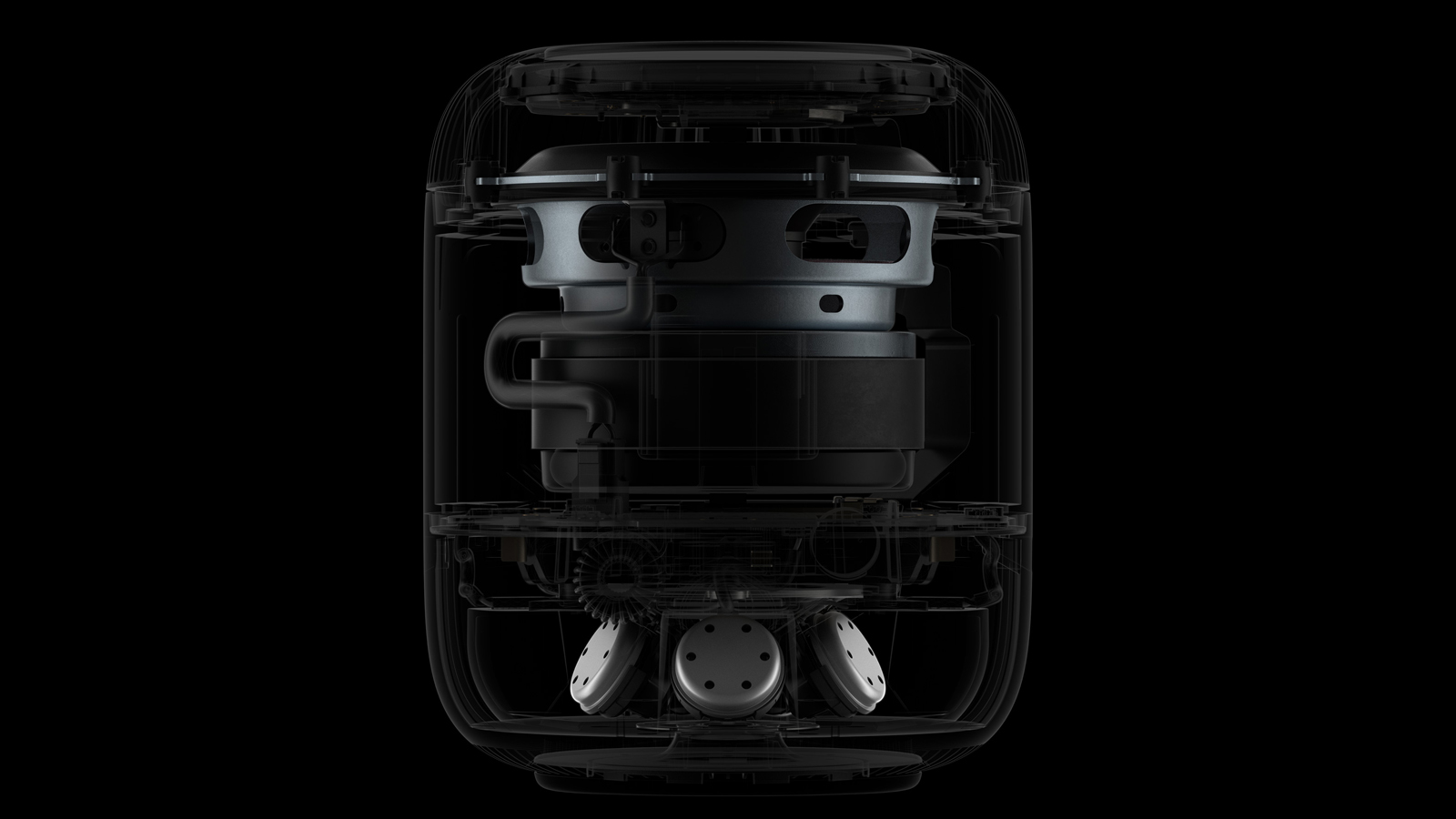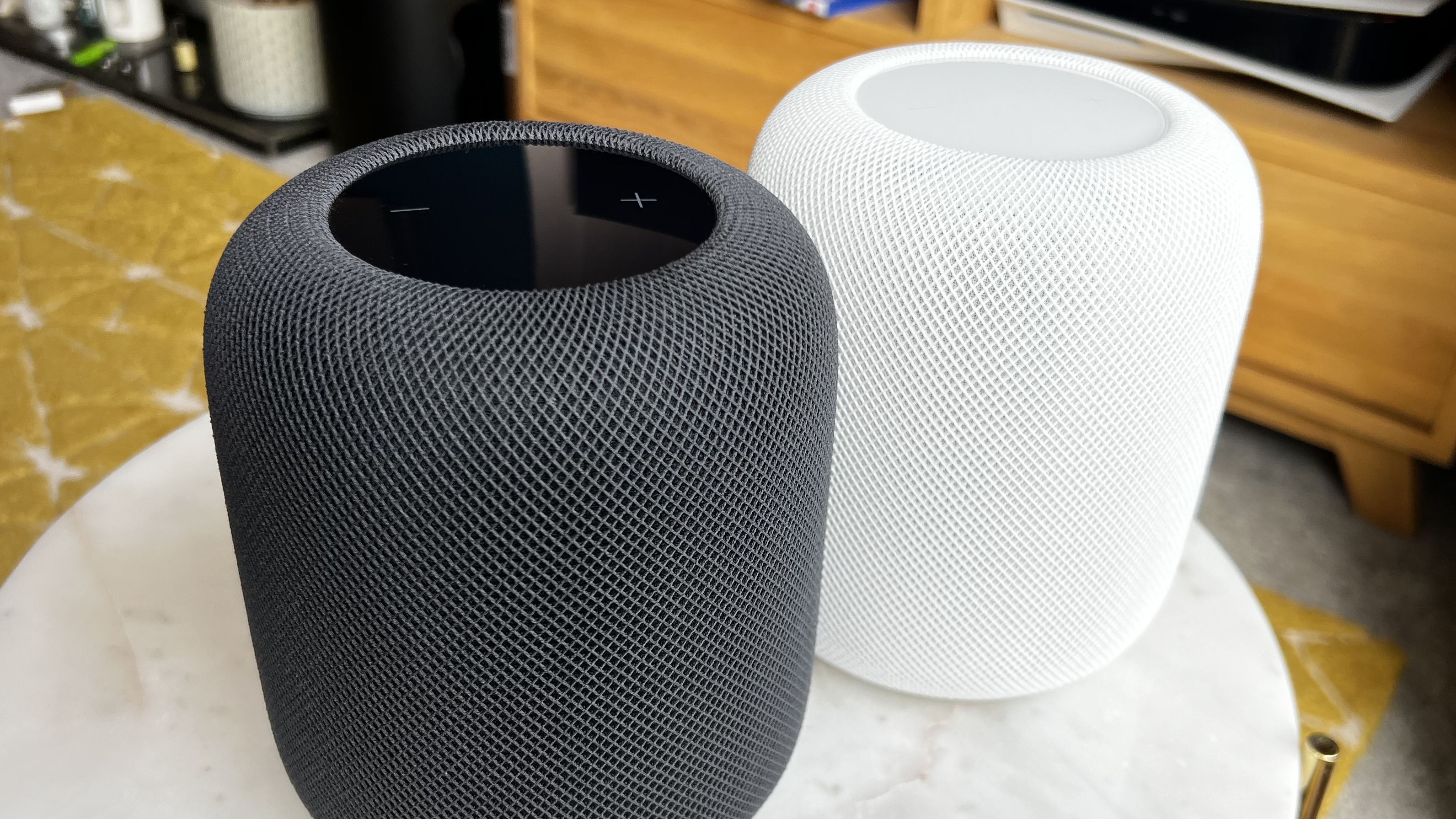Apple HomePod 2: everything you need to know
The HomePod 2 is here, so here's the low-down on it

- $299 / £299 / AU$479
- Released February 3, 2023
- Spatial Audio and Dolby Atmos support
- High-excusion woofer, five tweeters
- Smart home hub with Thread & Matter
Apple unveiled the HomePod 2 in January 2023 as the full-size successor to the original HomePod. As we explore in our full HomePod 2 review, the new wireless speaker is very similar to the first HomePod in most ways, but appears to have been designed even more to be geared towards Dolby Atmos movies and Spatial Audio for Apple Music.
The original Apple HomePod was one of the best wireless speakers on the market, before it was unceremoniously discontinued in March 2021 and the company elected to focus on the smaller and cheaper Apple HomePod mini. Happily, in the new HomePod, Apple brought back all the stuff we liked about the original HomePod, and added some new tricks… but it also kept everything that held back the original HomePod.
You get rich sound that's better than any other speaker can manage for the price, and in a compact package too – but a lack of Bluetooth audio support means there's no way to send music to it if you don't have an Apple device. So it's only really for the Apple faithful. We'll explain what that means here.
Apple HomePod 2: Price & availability
The HomePod 2 is released on Friday February 3, 2023, and is available to order already. It comes in Midnight (black) and White finishes.
It costs $299 / £299 / AU$479, which is very close to what the original version cost at the time it was discontinued (it was more expensive originally). The price for the HomePod 2 is the same as the original in the US, but is slightly higher in the UK and Australia.
This is a lot more than most of the best smart speakers – even the Amazon Echo Studio, the most expensive Alexa speaker from Amazon, is around half the price. The Sonos One is also hugely cheaper.
However, there are also much more expensive speakers around for audiophiles, including the likes of the Bowers & Wilkins Zeppelin (2021) or the mighty Naim Mu-So Qb 2nd Gen. In that context, the HomePod 2 is very reasonably priced,
Get daily insight, inspiration and deals in your inbox
Sign up for breaking news, reviews, opinion, top tech deals, and more.

Apple HomePod 2: Key features
The new HomePod 2 is extremely similar to the original when it comes to features and design. It's a round cylinder about six inches across, covered in fabric. Inside is an elaborate speaker array, consisting of one high-excursion woofer and five tweeters arranged around the speaker's center, angled upwards. Being 'high-excursion' means the woofer moves further than average when it vibrates, so can push more air for a deeper sound.
You can play music on the HomePod 2 using either Siri voice commands, or Apple's AirPlay 2 multi-room system over Wi-Fi. This means you need an Apple device to send music to the HomePod 2 – there's no Bluetooth audio, no Chromecast, no Spotify Connect, and no aux-in.
It works as part of AirPlay multi-room systems with the best AirPlay speakers from other brands, and you can use one HomePod 2 on its own, or two in a stereo pair.
The new HomePod features stronger support for Dolby Atmos music than the original, including Spatial Audio – it will bounce sounds off your walls to try to create the feeling of the music surrounding you.
And these Dolby Atmos skills will come in useful if you own an Apple TV, because you can use two new HomePods as an alternative to one of the best soundbars – the Apple TV can send its sound directly to the wirelessly HomePod, including Dolby Atmos 3D audio.
The HomePod 2 also supports Hi-Res Audio lossless tracks from Apple Music, for higher-quality audio overall. This doesn't work from other sources, because AirPlay 2 doesn't support Hi-Res natively.
The HomePod 2 has an ultra-wideband chip in, which means it can detect when an iPhone 11 or later is close to it, making it easy to transfer music from your phone to the HomePod (or vice versa) by just bringing it close. It's also used in the setup process, which is very easy.
For smart home lovers, the HomePod 2 supports Thread and Matter connectivity – as well as Apple HomeKit – and it can trigger automations in your smart home when you're not there. And it has built-in temperature and humidity sensors, which can monitor your home, or you can use them to trigger climate-control smart home gear.
The HomePod 2 comes with an annoyingly short (five feet) power cable, but it can be swapped for another cable, thankfully.

Should you buy the HomePod 2?
In our full HomePod 2 review, we spent a huge amount of time testing it as a single speaker, a stereo set, with music, and with movies – and the conclusion was that it's a great speaker that only people deep into the Apple ecosystem should buy.
When it comes to sound, we said that the "The high-end pops and hits with great clarity, the mid-range is fulsome and expressive, and bass is weighty yet controlled." We noted that the bass is a little tamer than the original HomePod, but that there was a lot more expressiveness in higher notes.
And we said that "Stepping up to a pair of HomePod 2 units combined into a stereo set gives the system an extra boost with all kinds of music. The forward-ness of the sound doesn't matter, because things are spread between the two anyway. And it feels like the bass gets to go a bit harder."
We said that playing Dolby Atmos music adds some interesting layering to tracks in a way that other speakers don't really offer, and that applies even more strongly if you have two in a stereo setup – sounds steer to the side and even slightly behind you. It's very impressive.
However, when it comes to be a 'smart speaker', we said that "Siri is good at taking very clear commands within certain structures" but "it's alarming just how often it stumbles."
And ultimately, the decision comes down to whether you want to be able to control music on the HomePod 2 from an Android device, Windows laptop or anything else. If someone in your house will want that… then the HomePod 2 probably isn't for you.
But if you're in an all-Apple abode, and you want sound quality that's stronger than the likes of an Echo or a small Bluetooth speaker, but doesn't cost as much as a high-end speaker from a hi-fi specialist, the HomePod 2 is the best value you can get.

HomePod 2: Other questions
Are two HomePods worth it?
If you've got the cash to spare, absolutely! In our HomePod 2 review, we found that made the sound bigger, more expansive, and let the bass off the chain a little more. And with Dolby Atmos music, it can steer audio around to create something like surround sound. Just bear in mind that you can't connect this stereo system to a turntable or anything like that.
How does it compare to HomePod mini?
In terms of features, they're nearly identical. The both have the same wireless connectivity, they both have the same smart home features, they both have Siri powering then. The HomePod mini doesn't have Dolby Atmos or lossless audio support, though. And, obviously, the HomePod mini is a lot smaller, and the sound quality isn't as strong. It's for smaller rooms, and it does a great job; the HomePod 2 is for bigger rooms, and it does a really great job. See our HomePod 2 vs HomePod mini guide for more.

Matt is TechRadar's Managing Editor for Entertainment, meaning he's in charge of persuading our team of writers and reviewers to watch the latest TV shows and movies on gorgeous TVs and listen to fantastic speakers and headphones. It's a tough task, as you can imagine. Matt has over a decade of experience in tech publishing, and previously ran the TV & audio coverage for our colleagues at T3.com, and before that he edited T3 magazine. During his career, he's also contributed to places as varied as Creative Bloq, PC Gamer, PetsRadar, MacLife, and Edge. TV and movie nerdism is his speciality, and he goes to the cinema three times a week. He's always happy to explain the virtues of Dolby Vision over a drink, but he might need to use props, like he's explaining the offside rule.
- Becky ScarrottAudio Editor